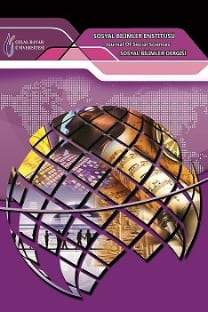TRANSLATION OF SHAKESPEARE’S LEGACY “MACBETH” ON THE 400TH ANNIVERSARY OF HIS DEATH
Although drama translation offers a rich platform for discussion and analysis, it is astonishing to see that it is the most neglected area in translation studies. Susan Bassnett, one of the most prominent theorists for drama translation, suggests five types of strategies for the drama translator. This comparative study focuses on Susan Bassnett’s first and the final strategies to find out the differences between two translations of Shakespeare’s Macbeth. Among five types of drama translation strategies, co-operative translation is the most accomplished one in terms of stage performance, while with regard to fidelity, literary translation stands at the opposite pole from it. The scholar, translator and critic Orhan Burian’s translation of Macbeth in 1946 is a typical example of literary translation; on the other hand, the well-known director and actor Haluk Bilginer’s translation of Macbeth in 2010 is considered to be a successful co-operative translation. Burian’s conservative style produced a faithful yet stilted translation. The dialogues were too long and implausable for the stage performance. On the contrary, Bilginer worked with the director and even with the actors at times in order to achieve the rhytm of speech, simplicity of pronunciation and easy graspability. Bilginer made alterations such as omitting some acts and scenes thereby keeping the audience’s attention focused on the play. His usage of easy-flowing daily spoken tongue and common Turkish idioms and slang expressions where appropriate also functioned to bring the text closer to the audience and to create playable and speakable dialogues which performers could utter without difficulty.
- ISSN: 1304-4796
- Yayın Aralığı: Yılda 4 Sayı
- Başlangıç: 2003
- Yayıncı: Manisa Celal Bayar Üniversitesi
Sayıdaki Diğer Makaleler
GELENEKTEN GELECEĞE: DEDE KORKUT KİTABI
SELİM İLERİ’NİN HİKÂYELERİ’NDE KENT/ KENTLEŞME MESELESİ
TARİHİ PERSPEKTİF IŞIĞINDA MAKEDONYA'DA TÜRKLERİN GÜNDELİK YAŞAMI
SAĞLIK İLETİŞİMİ, MEDYA VE ETİK: BİR SAĞLIK HABERİNİN ANALİZİ
XIX. YÜZYIL ORTALARINDA DEMİRCİ KAZASININ SOSYAL VE EKONOMİK DURUMU
D. H. LAWRENCE’S USAGE OF ARCHETYPES IN LADY CHATTERLEY’S LOVER
